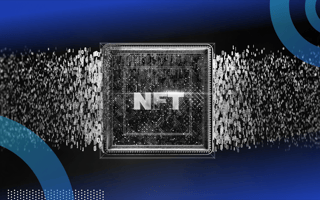When NFTs had a meteoric surge in popularity last year, it was exciting. For a time, it seemed like all people could talk about was NFTs. Celebrities started to drop collections, well-known brands like Nike partnered with NFT creators, and so on. All over, there were headlines like, “How NFTs are Disrupting the Art World.”
This excitement was felt especially deeply by those of us who have been creating NFTs for years. Having art world institutions like Christie’s and Sotheby’s take an interest in the form of art that we’re producing was groundbreaking, especially considering how few people knew what NFTs were before then. It really did feel like we were revolutionizing what art could and should be.
What Are NFTs?
Yet, the headlines that stuck in public consciousness were not about NFTs being revolutionary, or about creators using NFTs to build communities, or even about their function as collectibles. Instead, NFTs became exclusively associated with their potential to net investors fast fortunes. There is truth to this perception — investing in NFTs has paid off for many investors and creators, with tokens selling up to $91.8 million, but it isn’t the whole truth.
NFTs Have Changed What “Art” Means
NFTs are so much more than just assets for capital gain. NFTs allow digital artists to gain unprecedented recognition and acclaim. Since its inception, the digital art form has been overlooked. It wasn’t until NFTs started to gain traction that digital art galleries began popping up and that auction houses began to consider this art form worthy of being sold. Due to the boom in NFTs, people have begun to look at digital art for what it is: innovative, deeply creative, and deserving of aesthetic appreciation.
Along with attracting well-deserved attention to digital art media, NFTs have sparked a mass conversation about what makes art valuable. Whereas art ownership used to be reserved for a select group, those with both money and access, NFTs have made it possible for everyone to own original work. This even extends to works that are too costly for most people to afford individually, as buyers can fractionally invest in creators’ pieces.
NFTs Provide New Opportunities for Digital Artists
NFTs don’t just make owning art more accessible, but making art as well. The trope of the “starving artist” exists for a reason, but art-as-tokens opens up new avenues for artists to earn a living from their art. NFTs have created a new incentive for buyers to purchase digital art because the owner could actually demonstrate that the art belonged to them. Now that that incentive exists, more artists are able to generate sales. Artists retain more profit from these sales, too, which attracts creatives who can’t afford to make art within the established system.
NFT marketplaces allow for direct sales between creators and buyers, and tokenization enables creators to earn royalties from future sales. In other words, by purchasing an NFT, an individual buyer can have a substantial positive impact on that creator’s career and livelihood. In turn, creators can foster closer relationships with their supporters, enjoy more creative freedom, and produce more authentic work.
These close relationships extend across the NFT space. The direct collaboration and monetary opportunities afforded by NFTs encourage creators to support one another, creating a kind of ecosystem within the artistic community. Artists who collect other artists’ work benefit from building creative networks and sharing the wealth with their peers.
These are only a few reasons why an NFT is valuable. An NFT might serve a real-world purpose, like those that are tied to physical items. It might function as a ticket or grant entry to an event or a community space. You might just like the art, or the creator behind it. Regardless of what cool purpose an individual token might serve, engaging with NFTs means supporting the transformation of our culture’s creative landscape. By creating, collecting, or investing, participating in the NFT marketplace means challenging what art can and should be, and who can practice and benefit from it.





